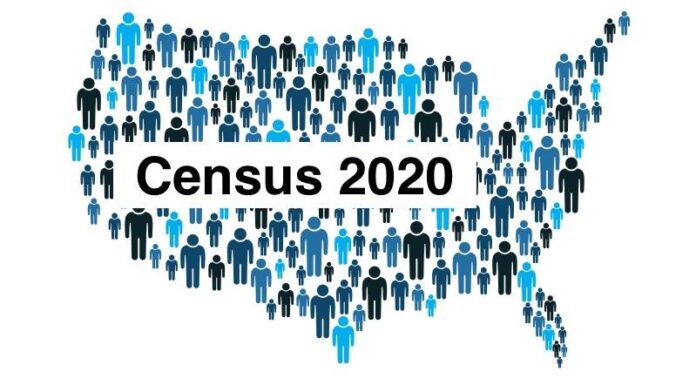The 2020 Census is still underway and Cameron County’s final count will determine how much federal funding local schools, hospitals, first responders, law enforcement, and other vital public agencies are allocated by the federal government over the course of the next decade.
The dollars will be a crucial source of funding as the community grapples with COVID-19, the related closures, emergency orders, and resulting economic uncertainties rattling cities across the nation.
County Clerk Sylvia Garza-Perez said the office has been in constant contact with census officials, pushing the count via social media on its Facebook page — Cameron County Census 2020 — as well as on Instagram and through personal outreach.
On Tuesday morning, the county’s response rate was listed at 30.7 percent. State-wide, 43.7 percent of Texas residents had completed the questionnaire, not far below the national response rate of 48.1 percent.
According to Garza-Perez, the response rate has risen “quite a bit” since questionnaires were mailed out last month. “We’re even with Hidalgo County, we’re way up above Willacy and Starr County,” she said.
The census is done every 10 years and will help determine how much federal funding the country receives to support existing programs.
On a practical, everyday level, Cameron County’s schools rely on federal funding to provide programs like pre-k, bilingual education, special needs programs, free lunch programs, and breakfast services. “For every child that attends public school in a low-income area like ours, the federal funding that each child receives is about $13,119 every year for the next 10 years,” said Garza-Perez.
“How does that impact us? In 2010, about a million of the people that were not counted nationally were children under the age of five. If we estimate those children are now 15 years old, our federal funding has not included them because they were not counted.”
Garza-Perez said she took on the task of advising superintendents and school board members on why the count matters. “I told them they’re important. They are the arm that extends to the families, to the students.”
“All of these dollars add up when we don’t get counted. For a family of six, the federal government allocates to the state about $1,600 a year per household. If you have a family of six, that’s $9,600. Over 10 years, that’s $96,000,” she said.
According to the U.S. Census Bureau, the information provided on the questionnaire is used by local trade associations and chambers of commerce, government agencies, analysts, organizations, and businesses for economic development, studies, key reports and spending decisions.
State and local officials use data from the census to draw district boundaries for local, state, and congressional elections, and the count determines the number of representatives Texans can elect to serve in Congress.
According to data the Texas Comptroller of Public Accounts, programs identified by the George Washington Institute of Public Policy showed $1.5 trillion federal dollars allocated to states, communities, households, businesses, and nonprofits during the 2017 fiscal year using decennial census data.
The institute’s compiled data from fiscal year 2016 showed nearly $44 billion distributed to Texas through the state’s 10 largest census-guided programs. These included Medicaid, Medicare, SNAP, special education grants, Head Start, the State Children’s Health Insurance Program, the National School Lunch Program, Highway Planning and Construction, Title I Grants to local education agencies, and Section 8 Housing Choice vouchers.
Although COVID-19 has slowed the county’s outreach efforts, Garza said shelter in place is the perfect opportunity to take a few minutes to complete the survey. This can be done through the mail, online, or over the phone.
The 2020 Census response deadline has been extended until the end of August, according to the official website. Locally, the county has been coordinating outreach and is pushing the count in Spanish-language radio, print, and media.
“I know that nationwide, it’s been pretty difficult for people to participate, but Cameron County needs to do its part. Cameron County needs to be the face for Texas. We’re still going through this crisis, but we still want to get counted, and we still want to make sure people realize we’re here. We’re an important community, we’re an important part of Texas, and we’re an important part of this country,” said Garza.
“I encourage everybody to participate. Get counted, because it’s really important for all of us.”
As of Tuesday, local census response rates were 36.5% in Bayview, 35.2% in Brownsville, 16.6% in Combes, 34.8% in Harlingen, 24.2% in Indian Lake, 20% in La Feria, 43.1% in Laguna Vista, 35.9% in Los Fresnos, 9.8% in Los Indios, 17.6% in Port Isabel, 33.8% in Primera, 38.4% in Rancho Viejo, 13.5% in Rio Hondo, 31.1% in San Benito, 1.7% in Santa Rosa, and 4% in South Padre Island.
To complete the census questionnaire, visit 2020census.gov or call (844) 330-2020 for English and (844) 468-2020 for Spanish.




